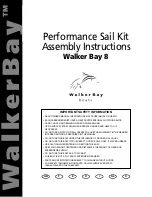
The Oakley Sound ADR30
The Oakley Sound Systems ADR30 is an analogue delay module that processes audio signals
to create echo and chorus effects. It uses two Xvive MN3005 bucket brigade delay (BBD)
integrated circuits to produce a very distinct 'vintage' sound. Classic companding noise
reduction circuitry further add to the sonic characteristics.
Delay time is controlled by a single control on the front panel as well as a built in low
frequency modulation oscillator and/or an external control voltage. With short delay times
using the modulation oscillator can create both subtle and deep chorus effects. A front panel
switch controls whether the signal runs through one or both MN3005 devices. Anti-aliasing
filtering is achieved by two 6-pole discrete switched capacitor low pass filters that track the
delay time, altering audio bandwidth depending on the delay time so that short delays remain
reasonably bright sounding.
The unit is mono but features separate outputs for the wet/dry signal and the delayed signal.
The audio input and outputs are balanced but are compatible with non balanced connections.
A two LED level meter helps you keep signal levels at optimum ensuring a respectable signal
to noise ratio without clipping. The unit will not be damaged by driving the unit into overdrive
and interesting sounds can be obtained by deliberately doing so, either by turning up the input
level or by allowing the feedback to build up to self oscillation.
Although the unit does feature noise reduction circuitry the delay line devices are inherently
noisy and have a very restricted bandwidth. The signal will deteriorate in an interesting manner
as the delay time is increased and/or feedback is heavily applied.
Delay time can be controlled continuously from 15ms to 300ms with one delay stage engaged,
or 30ms to 600ms with both stages engaged.
Audio bandwidth of the delayed signal varies with delay time. The upper cut off frequency
being 10kHz at the shortest delays and 1.5kHz at the longest delays.
The internal triangle wave low frequency oscillator has an approximate range of 0.11Hz to
26Hz.
An external control voltage (CV) can be applied via a dedicated socket on the rear panel to
alter the delay time. A positive voltage will decrease the delay while a negative voltage will
increase the delay. The CV will add to the effects of the internal LFO if applied and the delay
control knob. However, the maximum and minimum delay times of the unit can only be
extended a little in this way.
3




























